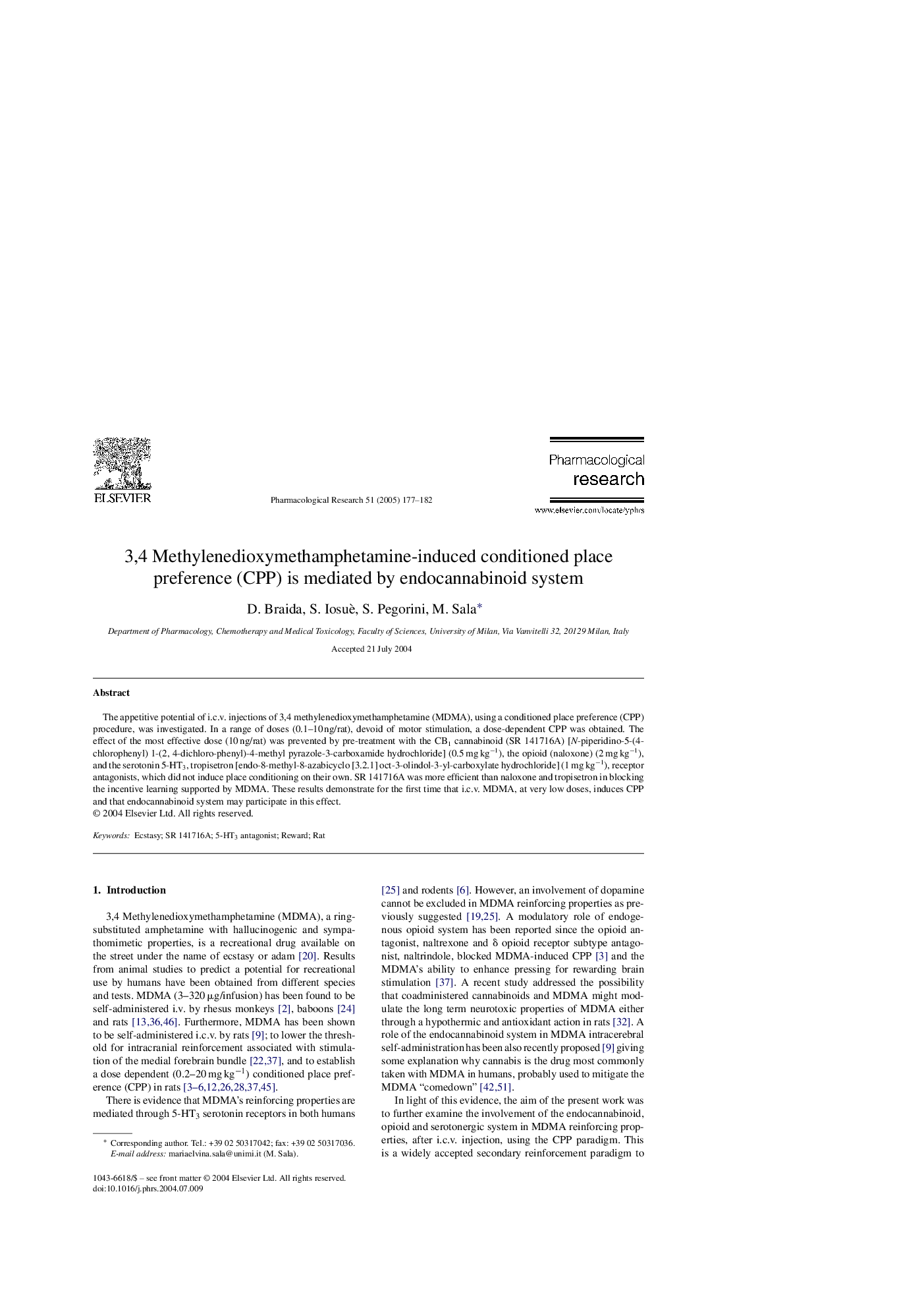| Article ID | Journal | Published Year | Pages | File Type |
|---|---|---|---|---|
| 9015730 | Pharmacological Research | 2005 | 6 Pages |
Abstract
The appetitive potential of i.c.v. injections of 3,4 methylenedioxymethamphetamine (MDMA), using a conditioned place preference (CPP) procedure, was investigated. In a range of doses (0.1-10 ng/rat), devoid of motor stimulation, a dose-dependent CPP was obtained. The effect of the most effective dose (10 ng/rat) was prevented by pre-treatment with the CB1 cannabinoid (SR 141716A) [N-piperidino-5-(4-chlorophenyl) 1-(2, 4-dichloro-phenyl)-4-methyl pyrazole-3-carboxamide hydrochloride] (0.5 mg kgâ1), the opioid (naloxone) (2 mg kgâ1), and the serotonin 5-HT3, tropisetron [endo-8-methyl-8-azabicyclo [3.2.1] oct-3-olindol-3-yl-carboxylate hydrochloride] (1 mg kgâ1), receptor antagonists, which did not induce place conditioning on their own. SR 141716A was more efficient than naloxone and tropisetron in blocking the incentive learning supported by MDMA. These results demonstrate for the first time that i.c.v. MDMA, at very low doses, induces CPP and that endocannabinoid system may participate in this effect.
Related Topics
Health Sciences
Pharmacology, Toxicology and Pharmaceutical Science
Pharmacology
Authors
D. Braida, S. Iosuè, S. Pegorini, M. Sala,
